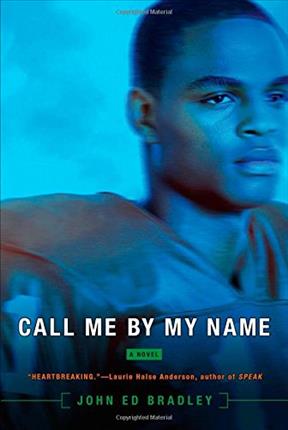| Call me by my name Author: Bradley, John Ed | ||
| Price: $10.65 | ||
Summary:
Growing up in Louisiana in the late 1960s, where segregation and prejudice still thrive, two high school football players, one white, one black, become friends, but some changes are too difficult to accept.
Full Text Reviews:
School Library Journal - 04/01/2014 Gr 8 Up—Narrator Rodney Boulet first meets Tater Henry in 1965 when Tater strolls into whites-only South City Park, hoping to try out for Pony League. While the other players heap plenty of verbal abuse on the young black boy, 10-year-old Rodney gets Tater safely out of the park before they can do physical harm. Over the next few years, Rodney and his twin sister, Angie, occasionally run into Tater in their small Louisiana town, and the three develop a casual friendship. When their high school is finally desegregated and both boys make the football team, their friendship is cemented. By the time they are seniors, the pair are leading the team to the state championship, which somewhat softens the town's narrow-minded views but not entirely: as Angie's and Tater's relationship moves beyond friendship, the couple are pressured from all sides. They do their best to ignore it, but as they dream of the not-too-distant day when all three of them will be at Louisiana State University, something happens that completely obliterates their plans. Students looking for lots of sports action may be disappointed, as this is a more contemplative tale of friendship in turbulent times. Rodney's quiet and matter-of-fact narration underscores the casual prejudice prevalent well into the 1970s in the Deep South. Recommend to fans of Patricia McKissack or Kristin Levine.—Kim Dare, Fairfax County Public Schools, VA - Copyright 2014 Publishers Weekly, Library Journal and/or School Library Journal used with permission.
Booklist - 04/15/2014 It’s the late 1960s and desegregation has finally come to small-town Louisiana. Twins Rodney and Angie Boulett have always been friendly with Tater Henry, a black boy from the other side of town, but it isn’t until they are freshmen at the newly integrated high school that the three become inseparable. Rodney couldn’t be more loyal to his best friend, but their friendship begins to fracture when he discovers the truth of Angie and Tater’s relationship. This absorbing story shines a spotlight on the complexities and tension of racial integration. Most characters fall neatly into designated roles and the dialogue can feel didactic, but that doesn’t detract from the range of viewpoints reflecting the era’s social upheaval. The narration flows best during the lengthy football scenes, where the author’s history as a football player really shines. Rodney and Angie seem unusually close (how many 17-year-old siblings spoon?), but readers will connect with Rodney as he struggles to resolve his feelings. - Copyright 2014 Booklist.
Bulletin for the Center... - 06/01/2014 Narrator Rodney looks back upon how racial integration tardily made its way into his hidebound Louisiana town from the late 1960s and into the early 1970s, and particularly how “Tater,” a gifted black athlete and all ’round great guy, forced Rodney and his white family to collectively confront their attitudes toward the new social order. Rodney is first across the line, quietly defying naysayers to nurture a dedicated friendship with Tater; Mom isn’t far behind, welcoming Tater into the family fold and treating him like all the rest of Rodney’s buddies. Dad’s having none of it; he takes barbed jabs at the boys’ friendship in the privacy of his own home but manages to keep a civil tongue around Tater, absenting himself from his presence whenever possible. Rodney’s twin sister, Angie, falls hard for Tater, and although at first the couple keeps their romance hidden-a stunning white cheerleader and a game-changing black quarterback are just a bit too much for the community to accept-they finally come into the open just before tragedy strikes. Yes, tragedy does strike, as seems inevitable from the tone of adult Rodney’s pain-laced memory, but it’s not the tragedy readers will expect, rendering the bittersweet what-ifs all the more complicated and poignant. With its tense but subtle plot trajectory structured by Rodney’s progress through high school, the novel adds nuance to the difficult American conversation on race with its honest examination of how a white youth, who sees himself on the vanguard of racial tolerance, is hit with his own limits when it comes to his beloved sister’s interracial romance. This compelling tale will foster both engaged group discussion and serious personal reflection. EB - Copyright 2014 The Board of Trustees of the University of Illinois.


